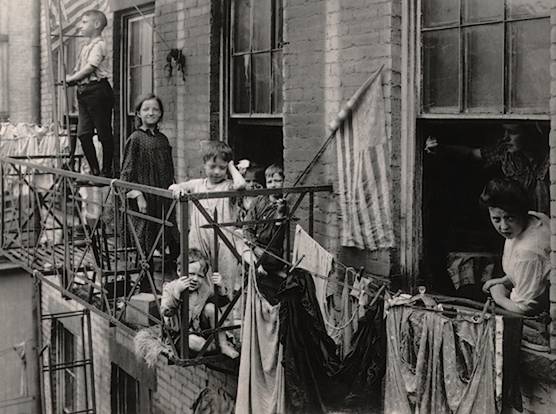~ Scholastic Summer Reading Challenge ~
Congratulations! Our class has read almost 900 minutes! Keep reading mis hijos! :)
~ Immigrant Kids ~
This is a great book about the immigrant experience in the 1800s - 1900s. Many of the photographs are taken by Lewis Hine and Jacob Riis. If you've begun reading the book, you'll see that the pictures really help to tell an immigrant experience story. They help illustrate and help readers visualize what life in these times was like for immigrant children. In the mid-1800s and 1900s immigrants in the United States came from overseas, meaning they were mostly European immigrants. Italian, Irish, etc; many settled in New York after making a long journey on boat and then through customs officials at Ellis Island. They often lived in crowded tenement buildings teeming with other immigrant families.
 |
| Immigrant families went on to live in clusters, ethnic neighborhoods and tenement buildings. |
 |
| Visit the Tenement Museum online click here! |
As I was reading the book a few things made me realize that the conditions in these tenement buildings was far worse than I'd ever even imagined! Worse, though only by my modern standards. We take electricity, running water, air conditioning and heating for granted and I knew that but it was made even more clear after reading the first section At Home. I realized 1) oftentimes, there was no running water directly to the families' apartments. 2) Families on one floor all had to share one bathroom and 3) there was no heating or cooling in these apartments ~ which is why the third picture above shows so many children on the fire escapes and balconies. They are hoping for a breeze!
"Many immigrants could not speak English when they arrived. They knew little about American laws and customs. And so they clustered together, living in ethnic neighborhoods where they could mingle with their countrymen and speak their native languages. Almost every major city had its German and Irish neighborhoods, its Polish, Italian, Jewish and Greek districts. People from the same village in Europe might wind up living as neighbors on the same street in America (Freedman, p. 15)."
I also realized that these families may not have been so different from my family either. I'm an immigrant and I came here as a family. We settled somewhere close to some family members for comfort more than anything. My parents were not fluent in English and they took up work and friends all the while speaking Spanish. My sisters and I did learn English very quickly - much like the immigrant children of the 1800s and 1900s! Often, their parents clustered around their neighborhoods because they did not speak English and they could survive, work and subsist without really having to struggle with the new language. The children though, were often bilingual or spoke English very well. In fact, some of the earliest Dual Language Schools were in Philadelphia for German Immigrants! I'm looking forward to continuing reading the book, the next section is about schools!

I'ts Eva. I got immigrant kids today and I finished it. I agree that being an immigrany kid would be hard.
ReplyDeleteWell, yes...being an immigrant child would be difficult but what exactly would YOU personally, Eva find hard about it? Immigrant kids had to struggle with many tough situations, language being just one of them. What did you find most interesting about their lives or, put yourself in their place...what would you find most difficult?
ReplyDeleteIt's Kate. I have been reading immigrant kids and thought it would be fun to imagine a voyage to America. I'am Katherine Bokovoy and I am an immigrant went a voyage to America. On the voyage there were many other people. The voyidge was filled with the smell of stench and it was very crowded with people. The people who owned the ship treted us like animals ans there was little room of which to sleep. The voyage was not the bewst but it is better than nothing. Even though the voyage was not the best when we all got to our destinatin we were all so happy to see the statue of Liberty.
ReplyDeleteHi Katie! Remember a couple of years ago when we read Nory Ryan's song? At the end of the book Nory makes it to America and gets to see the statue of Liberty. Compared to others who, during the potato famine in Ireland didn't get to travel; I bet it was better than nothing! I think it must've been crowded and because of there was so many people there it probably was stinky! I wonder how children on those boats entertained themselves?
Delete